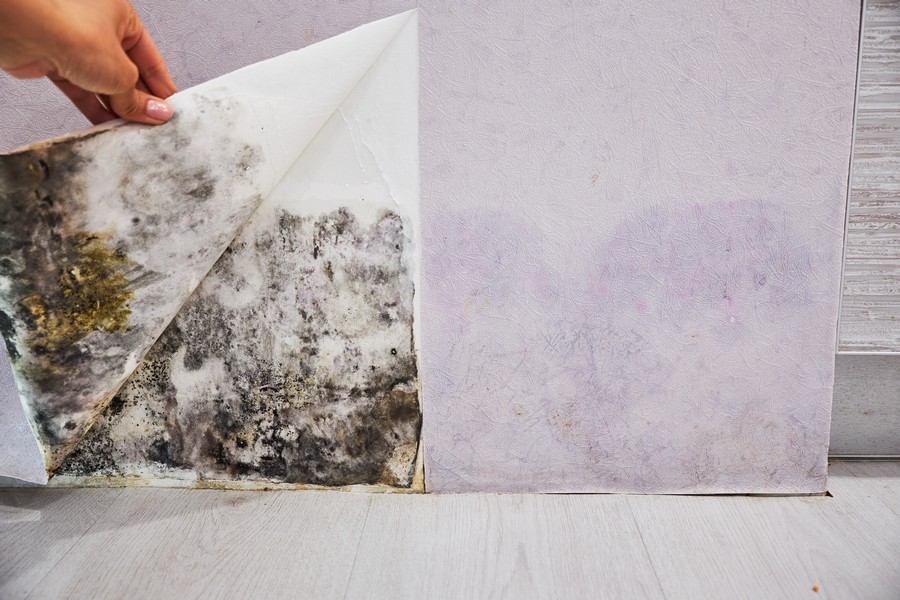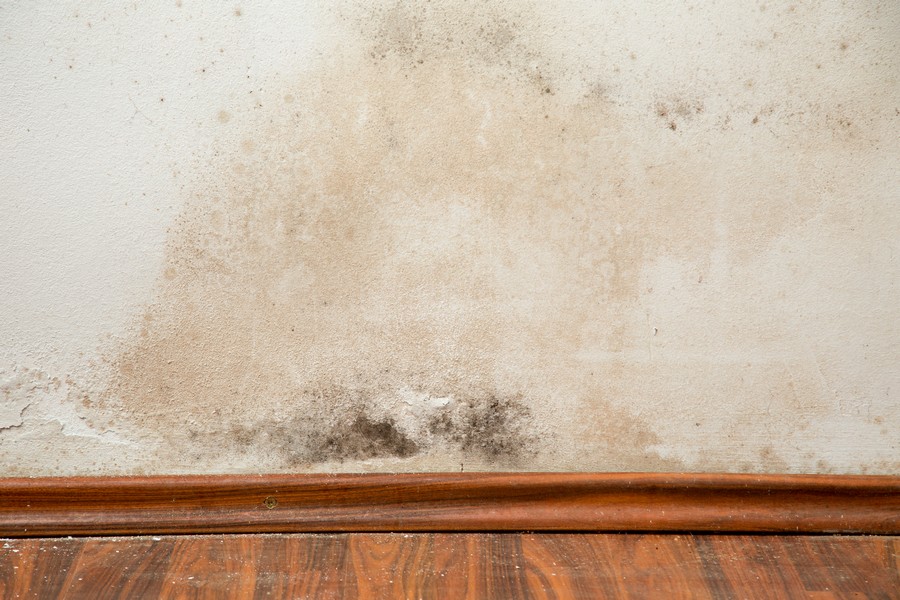Contact London Damp Experts Now to Speak With an Expert.

Moisture in the walls is rising due to water travelling up through the brick, block, or stone. This occurs due to capillary action, whereby water is drawn up through tiny holes, and will stop rising when gravity counteracts this power. Generally, this maximum height is 1.2m. However, as wall coverings such as renders, plasters, vinyl wallpaper, and paints are non-breathing, damp may be evident at greater heights. This is in contrast to penetrating damp, which occurs on top of walls or ceilings due to rain penetration, and is derived from water ingress on the ground.
The commonest error concerning rising damp is mistaking it for condensation effects, where water vapour turns to liquid when it comes into contact with cold surfaces. Condensation may have a similar look, however, certain clues signify the presence of the problem.
The PCA has affirmed that obtaining masonry samples, specifically from the mortar, is an accurate method to determine rising damp. Examining the circumstances inside the wall can reveal if your home is suffering from increasing dampness.
If the samples indicate water intrusion, then you have rising dampness. Not so if you have a condensation issue.

A Damp Proof Course (DPC) can address rising dampness instead of condensation. Applying it incorrectly, however, will not solve the problem. Thus, it is best to reach out to London Damp Treatments, a reputable company with knowledgeable experts, to ensure the right solution is provided.
Before tackling a wall with too much moisture, it’s essential to discern if the moisture is only due to rising damp or if other elements like condensation or rain leakage are also playing a role.
Investigating potential dampness requires ruling out other water sources. Condensation in colder months must be eliminated, and a comprehensive inspection must always be carried out. Should any additional water sources be detected, they must be eliminated to assess any dampness accurately, as it can be difficult to differentiate between multiple causes of water infiltration.
The survey must be comprehensive to ensure that all potential areas of moisture are identified. Extra care must be taken in cases where moisture and subsequent damage could go unnoticed, e.g. under suspended timber flooring. Whenever wood and moisture are present, the risk of decay must be reported to the client.

It is essential to recognise all the moisture indicators present during the survey.
It can be difficult to distinguish between many sources of water ingress when there are multiple. At the base of the wall, increased dampness which decreases as it rises is a sign of active rising damp. This dampness gradient is usually visible up to 1.5m, though it could reach greater heights depending on the situation and the damp-proofing measures taken during the wall’s construction. Occasionally, a ‘tidemark’ is visible along the wall, with the area below it clearly damp.
A ‘group’ of hygroscopic salts on the masonry can also reveal the presence of damp issues but will not be able to tell the difference between an active or inactive problem.
It is vital to determine the kind and source of dampness as this will influence the selection of treatments and the steps required. For instance, a Damp Proof Course (DPC) may be used to treat cases of rising damp, but is not suitable for wet rot.
Regular inspections can help to identify symptoms of rising humidity on walls. To avoid greater costs and disruption for those living in the building, it is wise to address such signs as soon as possible.
Tidal markings up to a metre above the skirting board can be indicative of rising damp and are caused by salt in the earth and evaporation.
If you can’t spot any evidence of water marks, look for wet patches or stains on the walls. Usually, these will be either brown or yellow, and will resemble the marks that water usually leaves. Above the skirting board, you may be able to observe them too.

Scan the skirting board for any fungal growth or anything crawling out from the side. Be mindful of any dampness that could affect the timbers and other objects. Also consider any peeling or broken paint that may indicate the presence of penetrating damp, especially if it seems to come from the roof of the building.
Salt in the form of white deposits is another sign. When the salts are washed from the brick into the plaster, patches of blistering form on the walls.
If you spot black mould on your skirting board, it likely means there’s a source of moisture nearby. If there’s no other sign of black mould in the house or surrounding area, and it appears only up to a meter above the skirting board, it could be an indication of increasing dampness.
Be mindful if your wallpaper begins to separate from the skirting board and turns up at the corner; it could be due to moisture.
Investigate the site you presume is developing humidity and lightly brush your fingertips across it. You could discern some hard crystals on your hands and even witness them cascading onto the ground.
Inspect exposed inside surfaces of stone or brickwork. Observe if the bricks are damp and if salts are forming on top of the paint. Keep in mind that this dampness will only occur on ground floors, due to moisture from the earth being forced up the wall.
Our website provides more information on the various types of dampness. These clear signs indicate that a damp survey is needed to determine the cause and extent of damage to the property, before the problem worsens and spreads into the building’s structure.
Contact London Damp Experts Now to Speak With an Expert.
London Damp Treatments offer specialised surveys to help reduce rising damp caused by the absence or damage of a damp-proof membrane or the bridging, breakdown, or lack of physical damp-proofing. We provide surveys and solutions for wet concrete floors and increasing dampness, in order to remove rising damp from a property.
A certified and trained surveyor will perform: an examination of the property in question; a survey of the land and buildings; an evaluation of the condition of the building; and an assessment of the estimated value of the property.
Call Our London Damp Experts team now for a free quote, consultation and advice:
Call on 0208 0162508.
A surface electrical moisture meter can be a useful tool to detect developing dampness, though it cannot provide definitive proof of its presence, particularly if remedial work has already been done.
Accurate evaluation of potential rising dampness requires quantitative moisture measurements, with specific procedures necessary for an accurate diagnosis. This involves taking a vertical sequence of drilled samples and measuring the hygroscopic and capillary moisture content of each one. The capillary moisture content indicates water intrusion; its presence and distribution in the vertical profile will indicate whether rising damp is present. This method also flags moisture issues due to hygroscopic salt contamination, rather than water penetration.
Yes, there is no doubt that increasing humidity can lead to serious health problems for everyone living in the house, especially those with pre-existing respiratory issues.
The cost of the exam varies depending on speed of identification of rising damp and the size of the building. Investing in a damp and timber survey is cost-efficient in the long run, as it prevents harm to the property.
Our experts are certified to surpass Property Care Association (PCA) standards, and they will accurately diagnose and assess the severity of your rising damp problem. Treatments and techniques to address your condition will be recommended, and our surveyors are Certified Surveyors in Remedial Treatment (CSRT). We offer our customers the highest level of care and priority.
Book an appointment for a rising damp inspection, or contact us and we’ll introduce you to a nearby team. We have numerous damp surveyors that can easily arrange a visit to your home at a time most suitable for you.


Max and his team have been at our property all week and I really can’t thank them enough for the fantastic job they’ve done on plastering both our walls and ceilings. They have literally transformed the appearance of our house! Not only has Ma…
From start to finish Max has been incredable. His knowledge lin damp proofing is second to none and his team where very clean and polite. The plastered finish was like glass so happy we choose Max Plastering for job.
Lovely bunch of lads left a very neat and clean job. Problem was solved.
Perfect Finnish and all left clean and tidy and no mess. Used Max previously and would not hesitate to ask him carry out more work.
Max, Harvey and Stuart arrived promptly as arranged. Done a great job on our outside rear wall. Work completed to a high standard, removal of all old material and cleaned up after themselves. I am so pleased with the standard of their work they ar…
They turned up on time and carried out the works in a very professional manor leaving the front of the house clean and tidy. Very impressed would definitely recommend.
I have to say that on every level Max (with Stuart and Harvey) did an extremely professional job! They explained what they were going to do, they were polite and courteous and respected that they were coming into our home. The plastering is of the…
I called max and he managed to come around the same day to do a survey. The next day I received an extremely detailed survey compared to any other damp proofer which made me feel very at ease that he was going to do the right job. Max and team tur…